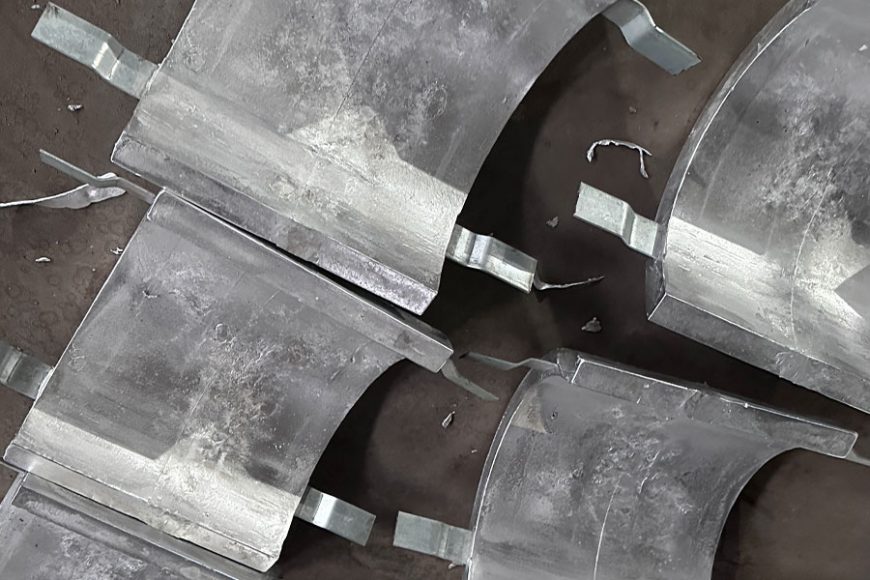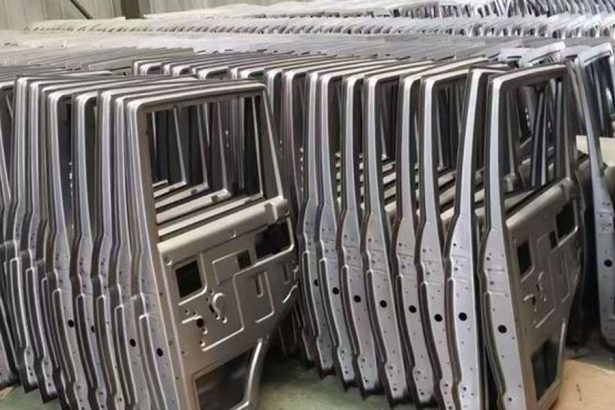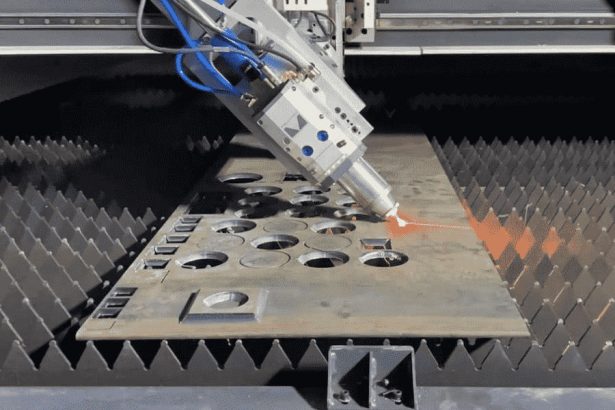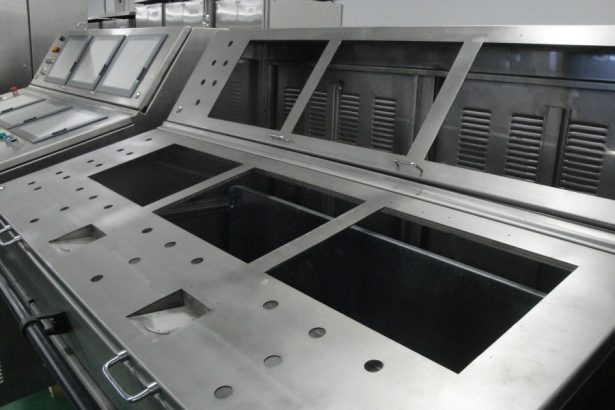Choosing the appropriate metal for applications in harsh environments is a critical decision in engineering, manufacturing, and design. Harsh environments, characterized by extreme temperatures, corrosive substances, high mechanical stress, or combinations thereof, demand materials that can withstand such conditions without compromising performance, safety, or longevity. Metals, due to their diverse properties, are often the material of choice for such applications, but selecting the right metal requires a thorough understanding of environmental factors, material properties, and application-specific requirements. This article provides a comprehensive guide to selecting metals for harsh environments, covering key considerations, material properties, and comparative analyses, with an emphasis on scientific rigor and practical applicability.
Introduction to Harsh Environments
Harsh environments encompass a wide range of conditions that challenge the durability and functionality of materials. These include:
- Corrosive Environments: Exposure to chemicals, saltwater, acids, or alkalis, as seen in marine, chemical processing, or industrial settings.
- Extreme Temperatures: High temperatures (e.g., in jet engines or industrial furnaces) or cryogenic conditions (e.g., in liquefied natural gas storage).
- High Mechanical Stress: Applications involving heavy loads, vibrations, or cyclic fatigue, such as in aerospace or heavy machinery.
- Erosive or Abrasive Conditions: Environments with particulate matter, such as sand or dust, that cause wear, as in mining or oil and gas extraction.
- Radiation Exposure: Nuclear reactors or space applications where materials face ionizing radiation.
- Combinations of Factors: Many environments combine multiple stressors, such as high-temperature corrosion in power plants or corrosion-fatigue in offshore structures.
The selection of metals for these conditions involves balancing properties like corrosion resistance, mechanical strength, thermal stability, and cost. Common metals and alloys used include stainless steels, titanium alloys, nickel-based superalloys, aluminum alloys, and specialized materials like zirconium or tantalum. Each metal’s suitability depends on the specific environmental challenges and the application’s performance requirements.
Key Properties of Metals for Harsh Environments
To choose the right metal, engineers must evaluate several material properties, each of which influences performance under specific conditions. These properties are discussed below, with an emphasis on their relevance to harsh environments.
Corrosion Resistance
Corrosion is the degradation of a metal due to chemical reactions with its environment, typically involving oxidation or electrochemical processes. In harsh environments, corrosion resistance is often the primary consideration, especially in marine, chemical, or acidic settings.
- Mechanisms of Corrosion: Corrosion can occur uniformly across a surface or locally (e.g., pitting, crevice corrosion, or galvanic corrosion). In harsh environments, localized corrosion is particularly damaging, as it can lead to rapid failure.
- Factors Affecting Corrosion: The presence of moisture, salts, acids, or high temperatures accelerates corrosion. For example, chloride ions in seawater promote pitting in many metals.
- Corrosion-Resistant Metals:
- Stainless Steels: Contain chromium (typically >10.5%), which forms a passive oxide layer that protects against corrosion. Austenitic grades (e.g., 316L) are widely used in marine and chemical environments.
- Titanium Alloys: Highly resistant to corrosion in seawater, acids, and chlorides due to a stable titanium dioxide layer.
- Nickel Alloys: Alloys like Inconel 625 or Hastelloy C-276 excel in acidic and high-temperature corrosive environments.
- Aluminum Alloys: Form a protective oxide layer but are less resistant to alkaline or chloride-rich environments.
Mechanical Strength and Toughness
Mechanical strength, including yield strength, tensile strength, and toughness, determines a metal’s ability to withstand loads, impacts, and cyclic stresses without deformation or fracture.
- Yield and Tensile Strength: High-strength metals like titanium alloys or high-strength steels are critical in applications like aerospace or heavy machinery, where structural integrity is paramount.
- Toughness: The ability to absorb energy before fracturing is essential in environments with dynamic loading or impact, such as in mining equipment.
- Fatigue Resistance: Cyclic loading in harsh environments (e.g., in offshore platforms) can cause fatigue failure. Metals with high fatigue strength, like certain nickel or titanium alloys, are preferred.
Thermal Stability
In high-temperature environments, metals must resist creep (slow deformation under constant stress), oxidation, and thermal fatigue. Cryogenic environments require metals that retain ductility and toughness at low temperatures.
- High-Temperature Metals:
- Nickel-Based Superalloys: Used in gas turbines and jet engines due to their excellent creep resistance and oxidation resistance at temperatures above 700°C.
- Refractory Metals: Metals like tungsten, molybdenum, or tantalum are used in extreme heat (e.g., furnace components) but are expensive and difficult to process.
- Cryogenic Metals:
- Austenitic Stainless Steels: Grades like 304L retain toughness at cryogenic temperatures, making them suitable for LNG storage.
- Aluminum Alloys: Used in aerospace for low-temperature applications due to their lightweight and ductile properties.
Wear and Erosion Resistance
Wear and erosion occur when materials are subjected to abrasive particles, sliding contact, or fluid flow. In harsh environments like mining or oil drilling, metals must resist surface degradation.
- Hardness: Harder metals, like tool steels or cobalt-based alloys (e.g., Stellite), resist abrasive wear.
- Surface Treatments: Coatings (e.g., chromium plating) or heat treatments can enhance wear resistance.
- Erosion-Corrosion: In environments combining erosion and corrosion (e.g., pipelines), duplex stainless steels or nickel alloys are often used.
Radiation Resistance
In nuclear or space applications, metals must resist embrittlement or swelling caused by radiation.
- Zirconium Alloys: Used in nuclear reactors due to their low neutron absorption and corrosion resistance.
- Stainless Steels: Certain grades are modified for radiation resistance in nuclear environments.
- Titanium Alloys: Used in space applications for their strength and radiation tolerance.
Cost and Availability
While performance is critical, cost and availability influence material selection. Exotic alloys like tantalum or high-purity nickel alloys are expensive and may have limited supply, making them suitable only for specialized applications. Common metals like carbon steel or aluminum are more cost-effective but may require coatings or treatments to withstand harsh conditions.
Environmental Factors and Their Impact on Metal Selection
Understanding the specific environmental conditions is crucial for selecting the right metal. Below, we explore key harsh environments and the metals best suited for them.
Marine and Seawater Environments
Marine environments expose metals to saltwater, which contains chloride ions that promote pitting and crevice corrosion. Additional challenges include biofouling, erosion from waves, and mechanical stresses from tides or currents.
- Challenges:
- Chloride-induced pitting and crevice corrosion.
- Galvanic corrosion when dissimilar metals are in contact.
- Biofouling, which can exacerbate localized corrosion.
- Suitable Metals:
- Titanium Alloys: Nearly immune to seawater corrosion, used in desalination plants and submarine components.
- Stainless Steels: Grade 316L is widely used for marine hardware, while super duplex grades (e.g., 2507) offer higher strength and corrosion resistance.
- Copper-Nickel Alloys: Resistant to biofouling and corrosion, used in ship hulls and piping.
- Aluminum Alloys: Used in lightweight marine structures but require protective coatings in saline environments.
Chemical and Acidic Environments
Chemical processing industries expose metals to acids, alkalis, and other aggressive substances. The pH, temperature, and concentration of chemicals dictate material selection.
- Challenges:
- Uniform corrosion in acidic or alkaline solutions.
- Stress corrosion cracking (SCC) in certain alloys exposed to specific chemicals.
- High temperatures accelerating chemical reactions.
- Suitable Metals:
- Hastelloy Alloys: Nickel-based alloys like Hastelloy C-276 resist a wide range of acids, including sulfuric and hydrochloric acid.
- Tantalum: Virtually inert to most acids, used in chemical reactors and heat exchangers.
- Stainless Steels: Austenitic grades like 904L or duplex grades are used in less aggressive chemical environments.
- Titanium: Resistant to nitric acid and wet chlorine, used in chemical processing.
High-Temperature Environments
High-temperature applications, such as in power generation, aerospace, or industrial furnaces, require metals that maintain strength and resist oxidation or creep.
- Challenges:
- Creep deformation under sustained loads.
- Oxidation or scaling at elevated temperatures.
- Thermal fatigue from cyclic heating and cooling.
- Suitable Metals:
- Nickel-Based Superalloys: Inconel 718 or René 41 are used in jet engines and gas turbines for their high-temperature strength.
- Refractory Metals: Tungsten and molybdenum are used in furnace linings and high-temperature tooling.
- Stainless Steels: Heat-resistant grades like 310 or 253 MA are used in furnaces and exhaust systems.
Cryogenic Environments
Cryogenic applications, such as in LNG storage or space exploration, require metals that remain ductile and tough at extremely low temperatures.
- Challenges:
- Embrittlement, where metals become brittle and prone to fracture.
- Thermal contraction, which can cause dimensional changes or stresses.
- Suitable Metals:
- Austenitic Stainless Steels: Grades like 304L and 316L are standard for cryogenic tanks and piping.
- Aluminum Alloys: Alloys like 5083 are used in LNG carriers for their lightweight and low-temperature toughness.
- Nickel Alloys: Invar (a nickel-iron alloy) is used for its low thermal expansion in cryogenic systems.
Abrasive and Erosive Environments
Mining, oil and gas, and cement production expose metals to abrasive particles or erosive fluids, causing wear and material loss.
- Challenges:
- Abrasive wear from sliding or impact with hard particles.
- Erosion-corrosion in fluid systems with suspended solids.
- Fatigue wear from repeated impacts.
- Suitable Metals:
- Tool Steels: High-carbon, high-chromium steels (e.g., D2) are used in cutting tools and wear plates.
- Cobalt-Based Alloys: Stellite alloys are applied as coatings or components in abrasive environments.
- Hardfacing Alloys: Nickel or tungsten-based hardfacing materials are used to enhance wear resistance.
Radiation Environments
Nuclear reactors and space applications expose metals to ionizing radiation, which can cause embrittlement, swelling, or transmutation.
- Challenges:
- Neutron-induced embrittlement, reducing ductility.
- Swelling or void formation from radiation damage.
- Corrosion in reactor coolants.
- Suitable Metals:
- Zirconium Alloys: Zircaloy is used in nuclear fuel cladding due to its low neutron absorption.
- Stainless Steels: Radiation-hardened grades are used in reactor components.
- Nickel Alloys: Used in high-radiation environments for their stability.
Comparative Analysis of Metals for Harsh Environments
To aid in material selection, the following tables compare key metals based on their properties and suitability for specific harsh environments. Each table includes quantitative data where applicable, sourced from standard material specifications and engineering references.
Table 1: Corrosion Resistance of Common Metals
| Metal/Alloy | Corrosion Resistance | Seawater | Acids | Alkalis | High-Temperature Oxidation |
|---|---|---|---|---|---|
| Stainless Steel (316L) | Good | Good | Moderate | Good | Moderate |
| Duplex Stainless (2507) | Excellent | Excellent | Good | Good | Good |
| Titanium (Grade 2) | Excellent | Excellent | Excellent | Moderate | Good |
| Inconel 625 | Excellent | Excellent | Excellent | Excellent | Excellent |
| Hastelloy C-276 | Outstanding | Excellent | Outstanding | Excellent | Excellent |
| Aluminum (5083) | Moderate | Moderate | Poor | Poor | Moderate |
| Copper-Nickel (90-10) | Good | Excellent | Poor | Moderate | Poor |
| Tantalum | Outstanding | Excellent | Outstanding | Excellent | Excellent |
Notes:
- Corrosion resistance is rated qualitatively based on standard performance in specified environments.
- Seawater resistance considers chloride-induced pitting and crevice corrosion.
- Acid resistance is based on performance in sulfuric, hydrochloric, and nitric acids at room temperature.
Table 2: Mechanical Properties at Room Temperature
| Metal/Alloy | Yield Strength (MPa) | Tensile Strength (MPa) | Elongation (%) | Hardness (HB) |
|---|---|---|---|---|
| Stainless Steel (316L) | 290 | 580 | 50 | 150 |
| Duplex Stainless (2507) | 550 | 800 | 25 | 270 |
| Titanium (Grade 2) | 345 | 450 | 20 | 160 |
| Inconel 625 | 414 | 827 | 30 | 200 |
| Hastelloy C-276 | 355 | 790 | 40 | 185 |
| Aluminum (5083) | 215 | 305 | 16 | 85 |
| Tool Steel (D2) | 1530 | 1730 | 10 | 620 |
| Tantalum | 200 | 300 | 30 | 100 |
Notes:
- Yield and tensile strengths are approximate values for annealed conditions.
- Hardness is measured in Brinell (HB) scale unless otherwise specified.
- Elongation indicates ductility, critical for impact resistance.
Table 3: Thermal Properties and High-Temperature Performance
| Metal/Alloy | Melting Point (°C) | Max Service Temp (°C) | Thermal Conductivity (W/m·K) | Creep Resistance |
|---|---|---|---|---|
| Stainless Steel (316L) | 1375–1400 | 870 | 16.3 | Moderate |
| Duplex Stainless (2507) | 1350–1400 | 600 | 15 | Good |
| Titanium (Grade 2) | 1668 | 400 | 21.9 | Poor |
| Inconel 625 | 1290–1350 | 980 | 9.8 | Excellent |
| Hastelloy C-276 | 1325–1370 | 1090 | 10.2 | Excellent |
| Aluminum (5083) | 570–640 | 200 | 121 | Poor |
| Tungsten | 3422 | 2000 | 173 | Outstanding |
| Tantalum | 3017 | 1500 | 57.5 | Good |
Notes:
- Maximum service temperature is the continuous operating temperature without significant degradation.
- Creep resistance is qualitative, based on performance under sustained loads at high temperatures.
- Thermal conductivity affects heat dissipation, critical in high-temperature applications.
Table 4: Cost and Availability
| Metal/Alloy | Relative Cost | Availability | Common Applications |
|---|---|---|---|
| Stainless Steel (316L) | Low | High | Marine, chemical processing, construction |
| Duplex Stainless (2507) | Moderate | High | Offshore, chemical, pulp and paper |
| Titanium (Grade 2) | High | Moderate | Aerospace, marine, medical |
| Inconel 625 | Very High | Moderate | Aerospace, power generation, chemical |
| Hastelloy C-276 | Very High | Low | Chemical processing, pollution control |
| Aluminum (5083) | Low | High | Marine, aerospace, transportation |
| Tungsten | Very High | Low | High-temperature furnaces, aerospace |
| Tantalum | Extremely High | Very Low | Chemical processing, electronics |
Notes:
- Relative cost is approximate, based on market prices for raw materials and processing.
- Availability reflects global supply chains and ease of procurement.
- Applications highlight industries where the metal is commonly used.
Practical Considerations in Metal Selection
Selecting a metal for a harsh environment involves more than evaluating material properties. Engineers must consider the following practical factors:
Application-Specific Requirements
- Load-Bearing Capacity: Structural components require high strength, while non-structural parts may prioritize corrosion resistance.
- Weight: In aerospace or transportation, lightweight metals like aluminum or titanium are preferred.
- Fabrication: Some metals (e.g., titanium) are difficult to machine or weld, increasing manufacturing costs.
- Service Life: Long-term applications (e.g., pipelines) demand durable materials, while short-term uses may allow cheaper alternatives.
Environmental Interactions
- Galvanic Corrosion: When dissimilar metals are in contact in an electrolyte, galvanic corrosion can occur. Selecting metals with similar electrochemical potentials or using insulators mitigates this.
- Coatings and Treatments: Protective coatings (e.g., anodizing for aluminum) or surface treatments (e.g., nitriding for steels) can enhance performance in harsh environments.
- Environmental Regulations: Some metals (e.g., chromium in certain alloys) are restricted due to toxicity concerns.
Lifecycle Costs
- Initial Cost vs. Maintenance: High-cost metals like titanium may reduce maintenance costs over time compared to cheaper alternatives like carbon steel.
- Recyclability: Metals like aluminum and stainless steel are highly recyclable, reducing environmental impact.
- Replacement Frequency: Durable metals reduce downtime and replacement costs in critical applications.
Testing and Validation
Before finalizing a metal, engineers should conduct testing to simulate the harsh environment. Common tests include:
- Corrosion Testing: Salt spray tests (ASTM B117) or immersion tests to evaluate corrosion resistance.
- Mechanical Testing: Tensile, fatigue, and impact tests to assess strength and toughness.
- Thermal Testing: Creep and oxidation tests for high-temperature applications.
- Field Trials: Real-world exposure to validate performance under actual conditions.
Case Studies in Metal Selection
To illustrate the application of these principles, the following case studies highlight real-world examples of metal selection for harsh environments.
Case Study 1: Offshore Oil Platform
Environment: Seawater exposure, cyclic loading from waves, and potential for sour gas (H2S) corrosion. Requirements: High corrosion resistance, fatigue strength, and weldability. Metal Chosen: Duplex Stainless Steel (Grade 2507). Rationale:
- Excellent resistance to chloride-induced pitting and stress corrosion cracking.
- High yield strength (550 MPa) for structural components.
- Good weldability compared to other high-strength alloys.
- Cost-effective compared to titanium or nickel alloys. Outcome: The platform achieved a service life of over 20 years with minimal maintenance, despite constant seawater exposure.
Case Study 2: Jet Engine Turbine Blades
Environment: Temperatures up to 1100°C, oxidative atmosphere, and high mechanical stress. Requirements: Creep resistance, oxidation resistance, and fatigue strength. Metal Chosen: Inconel 718 (Nickel-Based Superalloy). Rationale:
- Maintains strength and creep resistance at high temperatures.
- Forms a protective oxide layer to resist oxidation.
- High fatigue strength for cyclic loading in turbine operation.
- Widely available and proven in aerospace applications. Outcome: The turbine blades performed reliably for thousands of hours, contributing to engine efficiency and safety.
Case Study 3: Chemical Reactor for Sulfuric Acid
Environment: Concentrated sulfuric acid at 80°C, with potential for erosion from solid impurities. Requirements: Outstanding acid resistance, moderate mechanical strength, and erosion resistance. Metal Chosen: Hastelloy C-276. Rationale:
- Virtually immune to sulfuric acid corrosion across a wide range of concentrations and temperatures.
- Good resistance to erosion-corrosion due to its toughness.
- Suitable for welding and fabrication of complex reactor components.
- Long-term durability reduces replacement costs. Outcome: The reactor operated for over 15 years without significant corrosion or maintenance issues.
Advanced Considerations: Alloy Development and Emerging Materials
Recent advancements in metallurgy have introduced new alloys and materials tailored for harsh environments. These include:
High-Entropy Alloys (HEAs)
HEAs are multi-component alloys with near-equal atomic ratios, offering unique properties like high strength, corrosion resistance, and thermal stability. For example, a CoCrFeNiMn HEA shows promise in cryogenic and corrosive environments due to its ductility and resistance to pitting.
Nanostructured Metals
Nanostructuring enhances grain boundary density, improving strength and wear resistance. Nanostructured titanium alloys are being explored for aerospace and biomedical applications in harsh conditions.
Metal Matrix Composites (MMCs)
MMCs combine metals with ceramic or carbon-based reinforcements, offering superior wear resistance and thermal stability. Aluminum MMCs are used in abrasive environments like mining equipment.
Additive Manufacturing
3D printing allows for customized alloy compositions and complex geometries, optimizing performance in harsh environments. For example, additively manufactured Inconel 625 components are used in high-temperature aerospace applications.
Standards and Guidelines for Metal Selection
Several organizations provide standards and guidelines for selecting metals in harsh environments:
- ASTM International: Standards like ASTM G31 (corrosion testing) and ASTM E8 (tensile testing) guide material evaluation.
- NACE International: Provides guidelines for corrosion control in oil and gas, chemical, and marine industries.
- ISO Standards: ISO 9223 (corrosion of metals in atmospheres) and ISO 12944 (protective coatings) inform material selection.
- ASME and API: Standards for pressure vessels and piping in high-temperature and corrosive environments.
Compliance with these standards ensures reliability and safety in material selection.
Conclusion
Choosing the right metal for harsh environments is a complex but critical task that requires a deep understanding of material properties, environmental conditions, and application requirements. By evaluating factors like corrosion resistance, mechanical strength, thermal stability, and cost, engineers can select metals that ensure performance, safety, and longevity. Comparative tables and case studies provide practical tools for decision-making, while emerging materials and advanced manufacturing techniques offer new opportunities for innovation. With careful consideration and rigorous testing, the right metal can withstand even the most challenging conditions, delivering reliable performance in industries ranging from aerospace to chemical processing.




